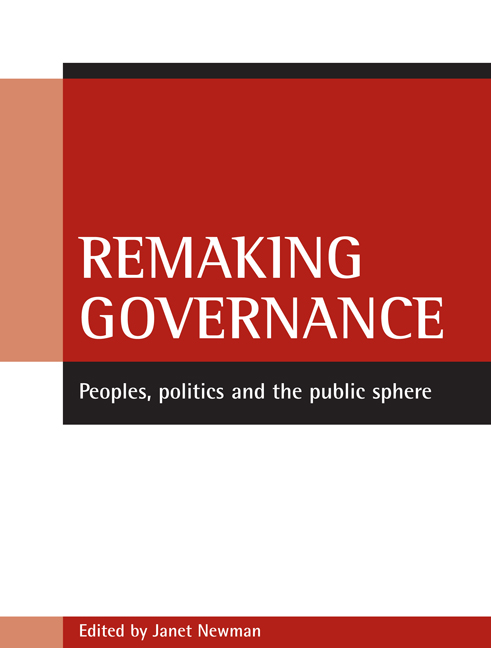Book contents
- Frontmatter
- Contents
- List of tables and figures
- Acknowledgements
- Notes on contributors
- Introduction
- one Reconstituting Europe: governing a European people?
- two Governance and the constitution of a European social
- three Remaking European governance: transition, accession and integration
- four Regendering governance
- five Welfare governance and the remaking of citizenship
- six Participative governance and the remaking of the public sphere
- seven Promoting democratic governance through partnerships?
- eight Among everyday makers and expert citizens
- nine Governance and the transformation of political representation
- Conclusion
- Index
one - Reconstituting Europe: governing a European people?
Published online by Cambridge University Press: 18 January 2022
- Frontmatter
- Contents
- List of tables and figures
- Acknowledgements
- Notes on contributors
- Introduction
- one Reconstituting Europe: governing a European people?
- two Governance and the constitution of a European social
- three Remaking European governance: transition, accession and integration
- four Regendering governance
- five Welfare governance and the remaking of citizenship
- six Participative governance and the remaking of the public sphere
- seven Promoting democratic governance through partnerships?
- eight Among everyday makers and expert citizens
- nine Governance and the transformation of political representation
- Conclusion
- Index
Summary
Introduction
European integration remains one of the most controversial political projects of the current period. It is the focus of much political conflict and considerable academic debate. Integration through the institutions of the European Union (EU) is often represented as the expression of an underlying European essence – a unity of place, people or culture. Such imaginaries have proved to be persistently unstable and contestable, providing an imperfect basis for conceiving of an integrative ‘European-ness’. In this chapter, the inherent problems of these imagined sources of unity are examined briefly, before attempts to define European-ness in contrast to its ‘Others’ are considered. Instead of searching for a unifying European ‘character’, it is argued that Europe is being constituted in the institutions, apparatuses and practices of European governance itself. In the emergent governance arrangement of the EU, we can see a conception of European diversity being constructed as an object to be governed. This view depends on seeing governance arrangements as political–cultural formations, rather than as constitutional or institutional systems whose meaning is self-evident. In the last part of the chapter, some of the limitations of this conception of European diversity and their implications for notions of a ‘social Europe’ are considered.
In search of unity
My approach to opening up the apparent, or imagined, unity of Europe to critical investigation draws upon previous work on the invention or construction of Europe as a social, political, economic and cultural space (for example, Christiansen et al, 2001; Fink et al, 2001; Balibar, 2002; Leontidou, 2004). Such authors have enabled an understanding of ‘Europe’ as an imaginary unity with several distinctive features:
• like all socially produced unities, it is necessarily a unity in difference – the product of attempts to organise coherence out of multiplicity. At its simplest, this can be grasped as attempts to define what is European, rather than national, in terms of culture, identity, space and forms of attachment or belonging;
• defining European-ness implies the relational definition of the non-European: Europe's ‘Others’. In basic terms, this articulation of what Europe is not is worked through the definition of other people, places and cultures. For example, often European-ness is defined axially – it is not the ‘South’, and nor is it ‘American’;
- Type
- Chapter
- Information
- Remaking GovernancePeoples, Politics and the Public Sphere, pp. 17 - 38Publisher: Bristol University PressPrint publication year: 2005
- 1
- Cited by



